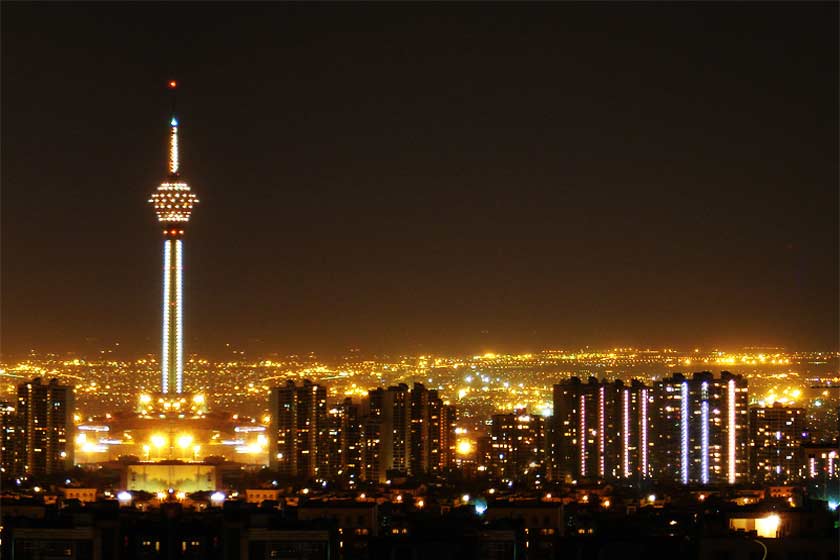
“Our Common Future” is the slogan of Brandt land report in Norway in 1983.
Rio de Janeiro Earth Summit was held in 1992. Its output was Agenda 21. 10 years later, the mechanism of sustainable development and its indicators and necessities were dealt with in Johannesburg in 2002.
The output was named 'Johannesburg Plan of Implementation'. After 20 years since the Rio Summit, the Rio +20 meeting was held in 2012 in order to investigate twenty-year achievements and find a solution for emerging socioeconomic and environmental issues. The outcome document of the United Nations Conference on Sustainable Development, entitled “The future we want.” It is noticeable that on a global scale, city prosperity has long been initiated, but unfortunately, this issue has not been dealt with well in our country; therefore, it is necessary to create a national campaign entitled Iran’s urban future. It seems that the future cities should regard following priorities anywhere in the world:
**Fighting against poverty
Cities are places where they have both the problem and solution in themselves simultaneously. They are a fertile ground for science and technology, culture and innovation, individual and collective creativity, and reducing the impact of climate change. Nonetheless, cities are the places of problems such as unemployment, discrimination, and poverty. All evidences indicate urban population increase in the world. On the other hand, the UN predicts the number of dense and marginalized population in cities will be doubled by 2050. City decision-makers should consider that they would encounter more densely populated cities in future. Thus, new infrastructures, rehabilitation, and reinforcement should be planned by them.
**Using technology
Future cities should be smart. They should be changed into places where the ICT has combined with urbanism, architecture, and even individuals and citizens’ mind in order that they can solve today and future problems creatively and innovatively. Cities can collect data and information around them by smart sensors and tools on a variety of issues, such as traffic. In addition, citizens’ speeches should be listened.
**The importance of public spaces
Cities of tomorrow are those that give more attention to the streets and public areas where people come together. The streets are a source of mobility and life in cities and a valuable public asset. They should have a higher position in urban planning and design. The streets account for 20 to 30 percent of the city’s size in most of the current cities, but they are considered low-value place merely for relocation. In future cities, streets should play a more important role than moving from point to point. The best cities in the world are those bringing people together in public spaces after their day-to-day work. These cities offer a variety of options, such as pedestrians and bicycle paths for citizens’ relocation. In these public spaces, social interaction and citizen participation are promoted. People, their behaviors and activities in the cities of tomorrow appear to be in the context of planning and design.
**The importance of citizens
In the current cities, many elderly people have difficulty adapting to the urban environment. Future cities should be friendly to the old people. They should be regarded in urban planning; what is happening now in a number of German and Spanish cities as well as in the Scandinavian region. This is equally important for children. In the current cities, children are strangers with urban spaces. They endure a stressful environment to cross the streets. On some streets, they are forbidden to cross. Future cities will be children friendly. In future cities, people must regain their true identity and significance.
**Energy saving
On a global scale, cities consume 76 percent of the world’s electricity, with the largest share of consumption in the transport sector. According to the International Energy Agency (IEA), 90% of energy consumption will be in cities by 2030. Future cities are in urgent need of new infrastructure due to existing problems and require new services and new business models. In order to meet the shortcomings in transport, telecommunications, energy, water and wastewater, by 2030, cities need $ 71 trillion, or about 3.5 times the world current GDP. A large share of this investment is related to energy and transport. Cities, if they want, can be more energy-efficient and more environmentally-friendly. Cities are often seen as destructive of the environment and ecological overload of nature, but they can also be considered as environmentally-efficient model simultaneously because increased congestion and better management of service costs are reduced, innovation is promoted and prosperity is possible through economic development. Cities are vulnerable to climate change, but they also have unique conditions, which can take on the role of leadership and global management to reduce climate change and adapt to it. Cities need to plan and policy in the field of climate change. In this regard, they need extensive research, as well as skilled and qualified specialists.
The cities of our country, both in terms of population growth and urban areas, are growing rapidly. The urban challenges of our country, such as pollution, unemployment, marginalization, social and cultural issues, are all understandable in the same perspective. The use of knowledge and technology should be the backbone of future urban managers. With current urban management methods, challenges cannot be solved.
**Mohsen Tabatabaei Mozdabadi is Secretary General of Iran Urban Economics Scientific Association (IUESA)
9191**2050
Follow us on Twitter @IrnaEnglish
 solhkhabar | Peace International News Agency Peace International News Agency , Peace News , International Agency News of Peace
solhkhabar | Peace International News Agency Peace International News Agency , Peace News , International Agency News of Peace